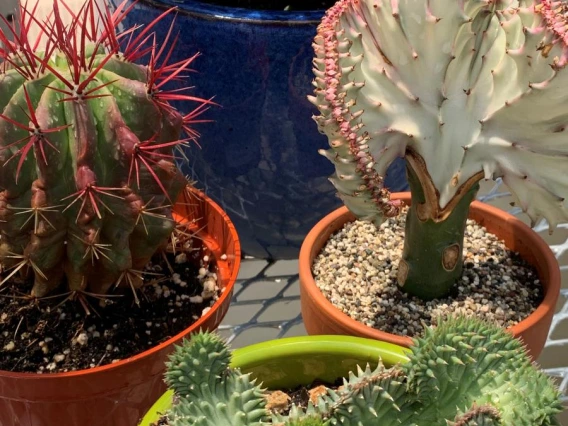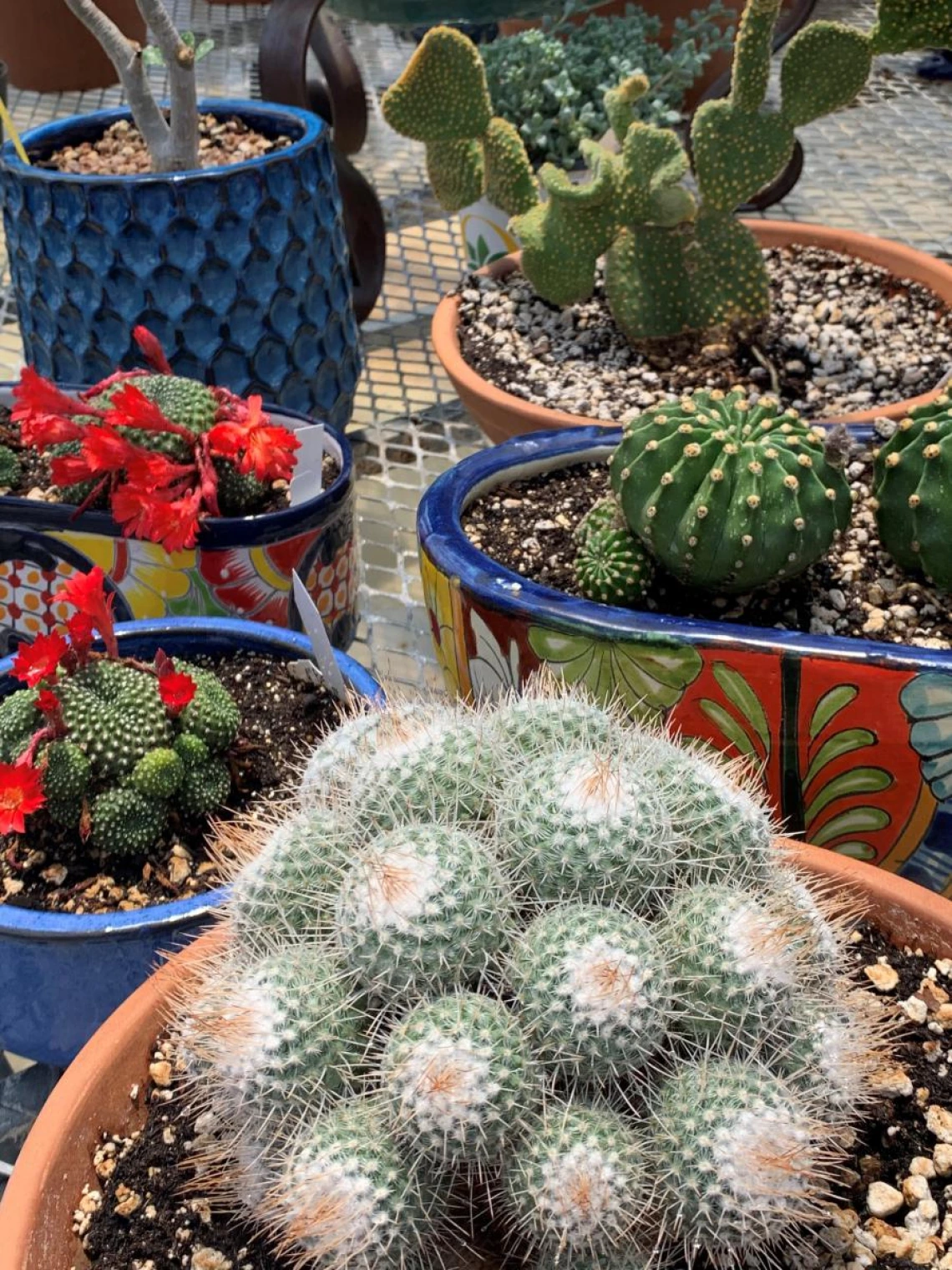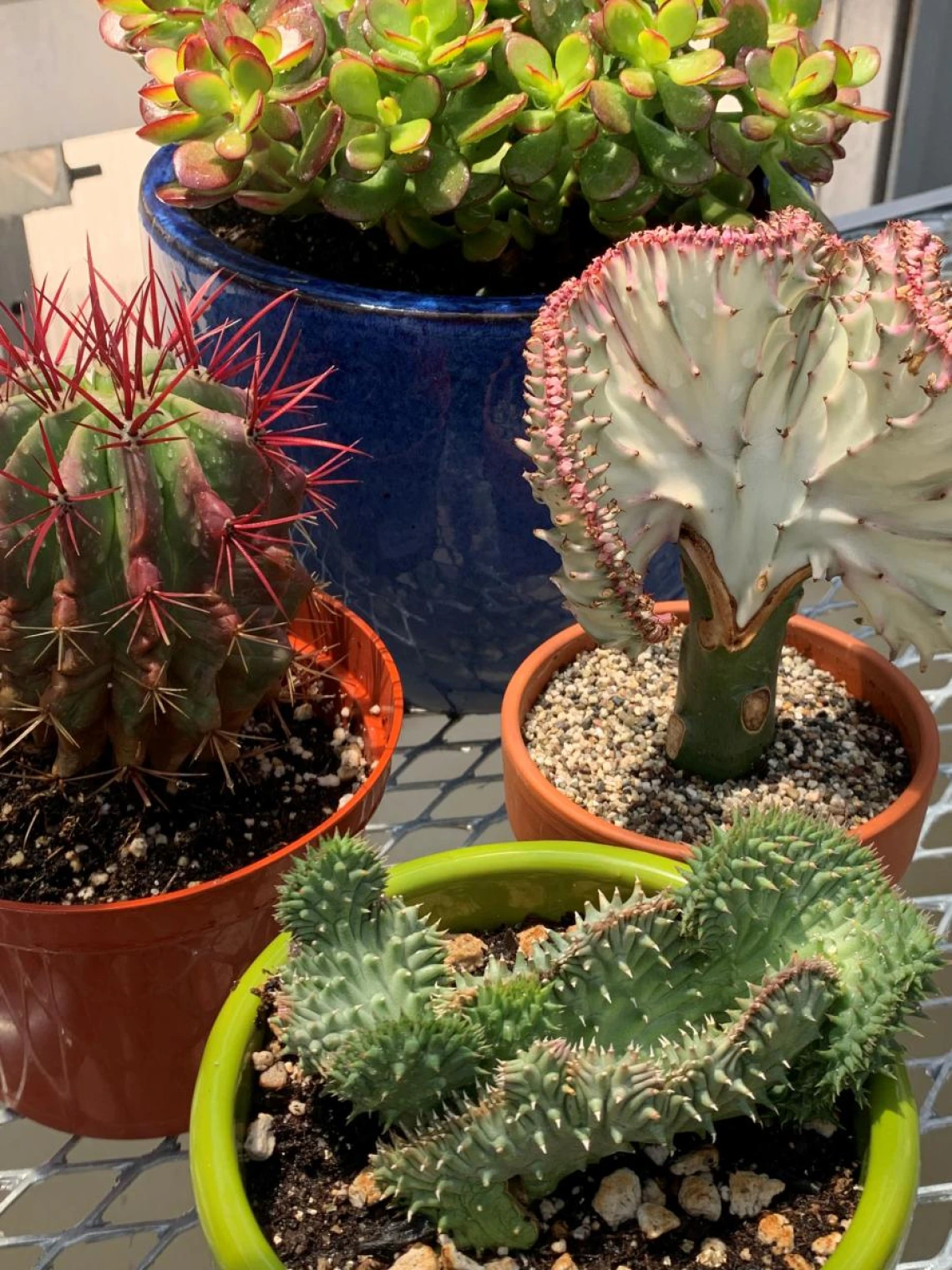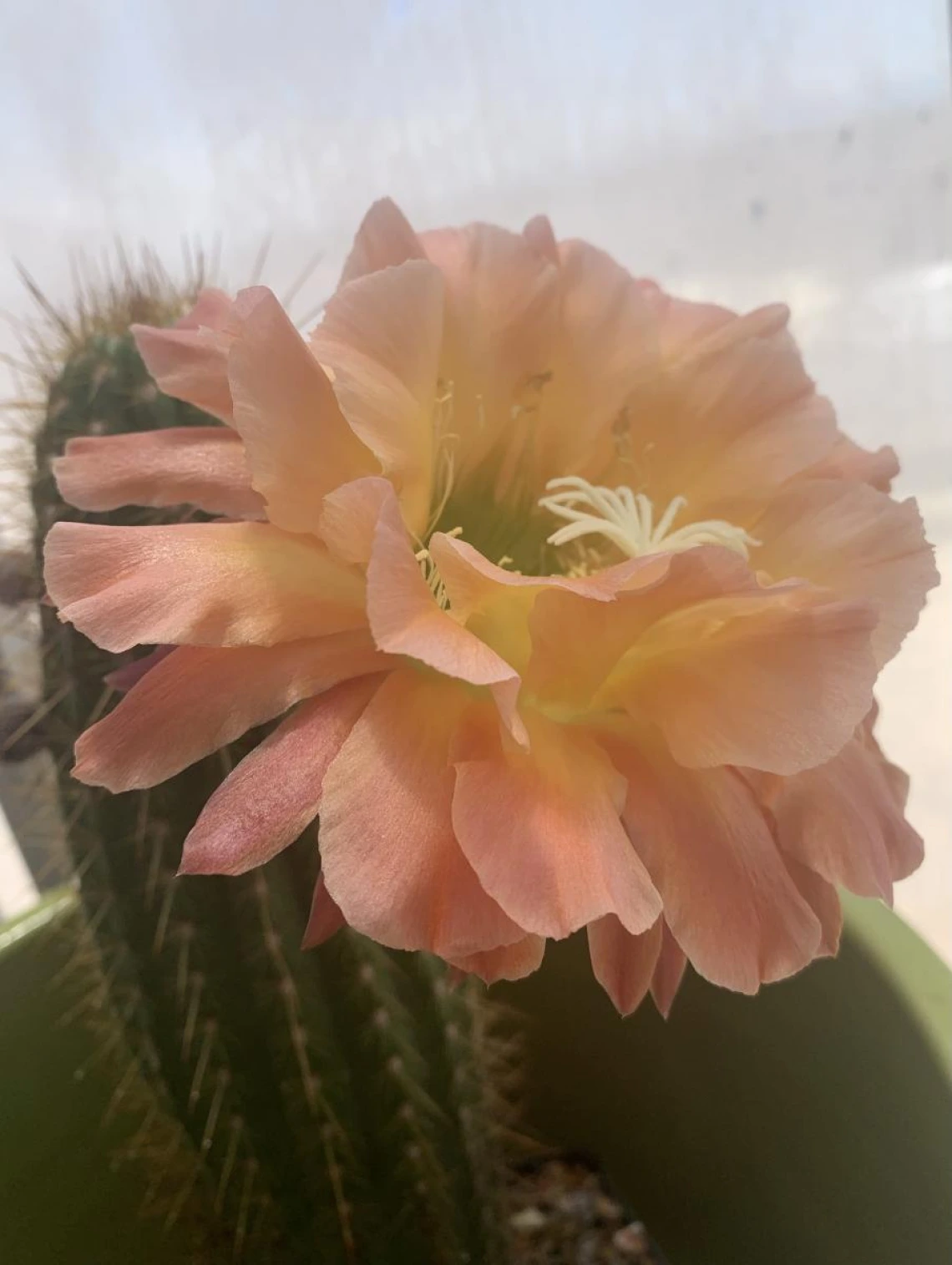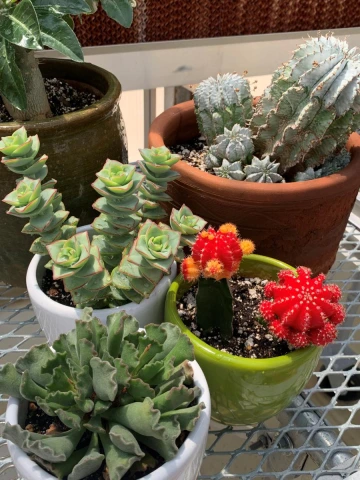
Plants are fundamental to the function and health of all terrestrial ecosystems, however, humans have evolved to prioritize objects and phenomena that are atypical of plants, creating a sort of "plant blindness". This cognitive bias results in a disconnection between humans and plants that threatens our ability to recognize the benefits and essential functions they provide in our world, and in a failure to care for them in such a way that they can thrive or survive. Desert plants have evolved toughness to many abiotic stresses and unusual forms that make them an ideal tool to treat plant blindness. Their unusual forms catch our attention, and their complex adaptations and responses to their environment inspire greater appreciation for the critical interactions occurring therein.
With this is mind, the desert plant conservatory was imagined initially as a place designated for the display of a diverse collection of the most unusual desert plants available to us. The plant science undergraduate club members rallied around the inspiration, collecting and donating plants, building a webpage to house species photos and descriptions they researched, planning for propagation, plant sales and tours of the conservatory, and designing botanical signage to connect greenhouse visitors to the educational content on the web pages associated with each species.

In the planning process, fate intervened to connect the idea to an inspired and generous donor, Helen, and her long time friend, Mark Dimmitt, the coolest plant collector in the southwest (uncontested :) With their support, not only did the concept for the conservatory evolve but the collection grew in scope, purpose, and size, the space to house the collection blossomed into a more colorful, inspiring, and educational space, and students deepened their knowledge base but expanded their network of experts through interactions with Mark, Helen, and many of their friends including nursery owners Dan Bach (Bach's Cactus Nursery), Mark Sitter (B&B Cactus Nursery, Jane Evans (Plants For The Southwest Nursery), Gene Joseph (Livingstones Nursery) and others.
While the space will grow and develop in the years to come it is already poised to become a secret garden, tucked away in a hidden greenhouse on top of the parking garage, and packed with visual and informational treasures. One special aspect of the collection is the associated record relating to the natural history of many of the plant specimens which the students heard from Mark Dimmitt directly. We are so pleased to learn through the lens of someone who has such a rich knowledge and appreciation for plants.
Here are some stories about a few of the plants Mark donated which he shared with us.
Euphorbia abdelkuri
Dimmitt Accession: 1997-531-01. Collected in Abd al Kuri Island, Socotra archipelago, Yemen by John J. Lavranos
This very odd-looking plant is endemic to a tiny island in the Indian Ocean. It is very rarely visited for several reasons in addition to its remoteness. The famous plant explorer John Lavranos is the only person who has ever collected this euphorbia (in the 1960s), and all of the plants in cultivation are of the same clone.
- This species is quite difficult to root from cuttings, but easy to grow once established. It can grow into a large shrub. Because of its habitat on a small oceanic island, it does not tolerate either desert heat or much cold.
Adenium arabicum ‘Hansoti Dwarf’
Dimmitt Accession: 1999-526-01. Yemen, prob. Jabal Shamsan, Aden.
This is probably the oldest clone of adenium in cultivation. I named the cultivar for Ashish Hansoti, owner of Tropica Nursery in Mumbai, India. Hansoti bought the original plant from an old collector who in turn bought it from a Brit who left India in 1947 and had had it for a number of years. (Adeniums were almost unknown in cultivation until about 1990.) I got cuttings of the clone from Ashish in 1999.
The geographic origin of this clone is deduced from two pieces of evidence. In the early 20th century India was trading heavily with the port of Aden. Jabal Shamsan is a mountain on the port’s peninsula. A DNA analysis of ‘Hansoti Dwarf’ was nearly identical to that of another plant that was collected on Jabal Shamsan. This mountain is also the type locality for Adenium arabicum, making this plant a topotype.
Adenium “arabicum” is quite variable throughout its large range. This clone is compact (not quite a dwarf), and has darker flowers than is typical of the species. They are borne in great profusion in spring. The plant seems to need a long winter dry rest to stimulate blooming.
The specific epithet is enclosed in double quotes to indicate that it is an illegitimate name. Its proper name is A. obesum. That name, however, is incorrectly applied to plants in Kenya and Tanzania, and it is not settled what its correct name is.
Fouquieria macdougallii
Dimmitt Accession: 1968-502-02. Collected in Mexico, Sonora, N of Hermosillo. by David Verity
Mexican tree ocotillo; ocotillo macho. David Verity was the director of the UCLA Botanical Garden when I was a graduate student there 1967-1970. Even though my major was Zoology, I was also a plant geek and often visited the garden. Cacti and other succulents were quite rare in cultivation in the 1960s, and the garden had many plants that I had never seen before. Dave gave me cuttings of this ocotillo, and it further increased my rapidly growing love for desert plants.
- F. macdougallii grows in tropical thornscrub and tropical deciduous forest. Unlike F. splendens, this species flowers at least 3 times a year. It is hardy to about 26 F.
- There are two botanists with the same last name but different spellings. This species was named for Thomas Baillie MacDougall, with a double “l”.
- The first 4 digits in my accession numbers are the year I acquired the plant (the others have little value to others). This is one of the oldest clones in my collection.
Tillandsia usneoides (Spanish moss)
A very large form from Oaxaca, Mexico. Needs high humidity and frequent watering. May need some shade in the conservatory; watch for it turning yellow or brown on the sunny side.
Tillandsia duratii var. saxatilis ‘Chaco Flaco’
Dimmitt Accession: MAD 1990-517-02. Collected by Richard Felger in the Chaco region of Paraguay.
A succulent epiphyte that uses it leaves as tendrils to cling to branches and climb into mesquite trees in a semiarid tropical woodland. Mature plants have no roots. The climate is of hot wet summers and long dry warm winters. This clone has the largest inflorescences that I’ve seen in the species. The cultivar name is mine. Hang it from a rope in a bright location, or let it climb into hardwood branches such as manzanita.
Selenicereus inermis
Dimmitt Accession: MAD 2018-528-01. I obtained it from Michiel Pillet.
It is an epiphytic cactus on tree branches in tropical forest in Central and South America. Good subject for hanging baskets.
Tillandsia intermedia, dwarf clone
Dimmitt Accession: MAD 2017-528-01. Obtained from Ed Read, curator of the California State U. Fullerton collection.
Smaller than the typical plants of the species. Viviparous (forms plantlets on the inflorescense), growing into long chains.
Tillandsia intermedia ‘Tangle’
Dimmitt Accession: MAD 1984-504-20. Unknown origin.
This clone has more twisted foliage than is typical of the species.
Rhipsalis paradoxa (chain cactus)
Dimmitt Accession: MAD 2019-516-10.
Obtained from John Bleck, legendary horticulturist in Santa Barbara, CA. An epiphytic cactus from Brazil. Good for hanging baskets.
Kalanchoe x Houghtonii (mother of millions hybrid):
Dimmitt Accession: MAD 2020-509-02.
A hybrid of K. daigremontiana X delagoensis. Obtained from John Bleck’s garden. (I’m not sure of the ID. One that flowered was not as labeled. You’ll know if it’s the hybrid if the flowers are large pink or red pendant bells.) Numerous kalanchoe species form plantlets on the leaf margins. This is one of the most prolific, and can become an invasive pest in frost-free environments.
Tillandsia ionantha:
Dimmitt Accession: two clones of unknown origin (Paul Isley of Rainforest Flora or Pam Hyatt of Bird Rock Tropicals can probably identify them from photos).
This is one of the most widespread species in the genus, and there are many natural and horticultural forms. Epiphytic plants that have very few roots that function as anchors. Do not plant in any moisture-retentive medium. Grow on a rapidly-drying substrate such as wood, stone, or just a bench surface; or hang them on string and they grow into balls.

A Biographical Sketch of Mark Dimmitt
- Earned a B.S., Pomona College; M.S., UCLA ; and Ph.D., The University of California at Riverside (in biology/herpetology)
- Served as curator of Botany and Director of Natural History, Arizona-Sonora Desert Museum (1979-2011)
- Author of >50 scientific and popular publications about ecology and horticulture.
- He is coauthor of the book Adenium: Sculptural Elegance, Floral Extravagance (2008).
- His major publication is the plant and ecology chapters of A Natural History of the Sonoran Desert (2000)
- He is the senior editor of the revised edition of A Natural History of the Sonoran Desert (2015).
- He is a Fellow of the Cactus and Succulent Society of America.
- Mark is a renowned plant breeder:
- Adenium; ‘Crimson Star’, ‘Evelyn Marie’, and ‘Bouquet’ are among his creations.
- Tillandsia (bromeliads); he has introduced about 50 cultivars
- hybridized Trichocereus (=Echinopsis, cacti)
- Mark also collects and grows a number of other weird plants, mostly succulents and epiphytes.
Select Media Featuring Mark:
- (2019) Plant Freak KOLD News 13
- (2017) Adenium Cultivar Development CSSA Conference Talk
- (2016) A Passion for Plants AZ Public Media



